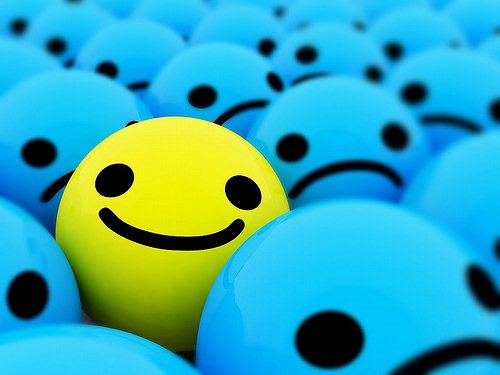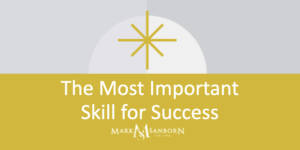My daughter, Kait, recently graduated from high school, and to mark the occasion my wife and I took her on a river rafting trip in Buena Vista, Colorado. As we were setting off on our first ride, our tour guide, Zach, assured us that he had more than 20 years of experience navigating the rapids of the Arkansas River and that there was no need to be nervous.
I wasn’t too concerned… until we approached our first rapid, aptly named the Widow Maker. Zach said our plan of attack for the Widow Maker was to go straight through it with everyone in the boat paddling as hard as they could. He matter-of-factly mentioned that if the group didn’t paddle hard enough or straight enough, we might topple over and fall out of the raft. If that happened, then we would certainly get pushed to the side by the currents and most likely end up in a swirling whirlpool. If we became stranded in that whirlpool, we would be forced to watch the other, more successful, boats pass us by before we could continue our journey.
No one asked the question that was spinning in my mind—how could we know what was hard enough or straight enough before it was too late? As it happened, our group was able to successfully navigate the Widow Maker and we continued our adventure through the Pinball, Zoom Flume and Seven Stairs rapids and it was a fun and memorable trip.
As I think back on that trip, I remember not only the amazing time I had with my wife and daughter, but I’m also reminded of an important lesson about obstacles. When faced with a difficulty, people usually have a choice. We can choose to paddle as hard as we can through the many unknowns we are faced with or choose to sit on the sidelines, hope for the best, and possibly watch others pass us by. If we choose to tackle the obstacles despite the associated unknowns, we may fail (like falling out of the boat), but if that happens there is an opportunity to become more resilient (regroup and get ready for the next ride). Every chance we take makes us stronger. Interestingly, it can also make us happier.
Research from the NORC at the University of Chicago indicates that today only 14 percent of people consider themselves very happy. This is the lowest number since NORC started its survey in 1972. People have either toppled out of their boat and have forgotten how to get back in or they are still sitting on the sidelines watching others enjoy, thrive and succeed in life. This has led to a general feeling of dissatisfaction.
Studies have shown that many people choose not to act to try to achieve greater happiness because of what researchers call negativity bias. Negativity bias is the tendency to assign more importance to negative experiences than to positive or neutral experiences. For example, had I fallen out of the boat during my rafting trip, I might voluntarily steer clear of adventurous activities in the future, particularly those involving water. A person who has failed many diets may give up seeking a healthy lifestyle. A person who is stuck in a dead-end job might be willing to stay there because the new one might be just as bad or even worse.
A Positive Mindset
In my Positive Mindset workshop, I teach about squashing our ANTs (Automatic Negative Thoughts). The first step is identifying and calling out those thoughts because only then can we read the situation clearly, recognize our options, and make thoughtful decisions about the best ways to respond.
After identifying ANTs, the next step is replacing any negative thoughts with positive ones. Research shows that positive people are more productive, have higher levels of job performance, are more creative and are less likely to experience burnout.
Dr. Barbara Fredrickson, professor at the University of North Carolina and author of the book Positivity, found we need three positive thoughts for every single negative thought to combat negativity bias. The good news is that we can act deliberately to increase our happiness by looking for the good all around us.
Luckily there is a part of our brain called the reticular activating system (RAS) that helps us filter information. For example, when I purchased my car last year, I started noticing that same car everywhere I went. My reticular activating system was to blame. If you are looking for proof that the world is cruel and unfriendly, your RAS will identify it all around you. Similarly, if you are looking for the positive aspects of the world around you, you will find it. When it is found, the mindset is changed.
She also describes a person with a positive mindset as someone with these 10 characteristics: joy, gratitude, interest, serenity, hope, pride, amusement, inspiration, awe and love. Who wouldn’t want to be identified with those words?
Add “Happy Habits”
I share many “Happy Habits” in my keynote presentations that cultivate a positive mindset. I use these “Happy Habits” as the foundation for positivity in my work and home life, relying on proven strategies from researchers and authors.
One of my favorites habits comes from Sonja Lyubomirsky, author of The How of Happiness, where she discovered a 42 percent increase in happiness after participants committed five acts of kindness one day a week for six weeks. When people put the focus on others rather than themselves, their satisfaction levels rise.
Think of things you could do to be kind to others at home and at work: Leaving a nice note on a co-worker’s desk about a recent presentation, volunteering at a local non-profit organization, purchasing coffee for the person behind you at Dunkin Donuts, or smiling as you walk down the street. As a bonus, smiling (even when you don’t feel like smiling), spurs a chemical reaction in the brain which releases certain hormones including dopamine and serotonin which increase happiness and reduce stress.
Another one of my favorite “Happy Habits” comes from Dr. Robert Emmons, professor at the University of California-Davis and scientific expert on gratitude. He found that people who keep a gratitude journal benefit from stronger immune systems, lower blood pressure, have higher levels of positive emotions, are more forgiving and are more optimistic. Who do you know that wouldn’t want all of those great benefits?
Research by Lyubomirsky, a professor at the University of California-Riverside, and Dr. Ken Sheldon, professor at the University of Missouri, found a 2 percent increase in happiness after just one week of documenting three “good things” every day. You could document observations from the day or you could use the following questions:
- What one good thing happened at your work/school today?
- What one thing brought a smile to your heart today?
- What one helpful support have you had from your relationships today?
- What is one way you made the most meaningful use of your time today?
I personally apply an attitude of gratitude in two different ways. I have a happy moments folder and I write the answer to these three questions every morning:
- I am looking forward to…
- I am grateful for…
- I will let go of… .
I also focus on being thankful for my blessings when I journal each of these areas of my life (P.I.E.S.): Physical—taking care of your body; Intellectual—expanding knowledge or learning; Emotional—feelings or attitudes; and Social—interacting with friends, family and co-workers.
Another “Happy Habit” which I share in my talks is to rethink how you view your job. Dr. Amy Wrzesniewski, professor at Yale University and expert on how people make meaning of their work, defines three levels of how people view their job:
- Job—chore/paycheck
- Career—advance/succeed, or
- Calling—fulfilling/contributing.
Those who view their job as a calling report higher satisfaction with their lives and work and are more likely to use their strengths on the job. While this is not easy to change overnight, I challenge you to rewrite your job description into a “Calling Description” and start the process of enhancing your happiness.
Positivity is more important today than ever before. Although happiness levels may currently be low, the Harris Poll Survey of American Happiness is that 72 percent of people feel optimistic about the future. When we focus on increasing our own happiness and we recharge to 100 percent, we are in a better position to positively impact our co-workers, family and anyone we interact with each day. Positive people are more engaged at work and at home, positive families are connected families and positive employees are successful employees. Positivity is contagious, so let’s all strive to increase our positivity and make 2022 our best year yet!


